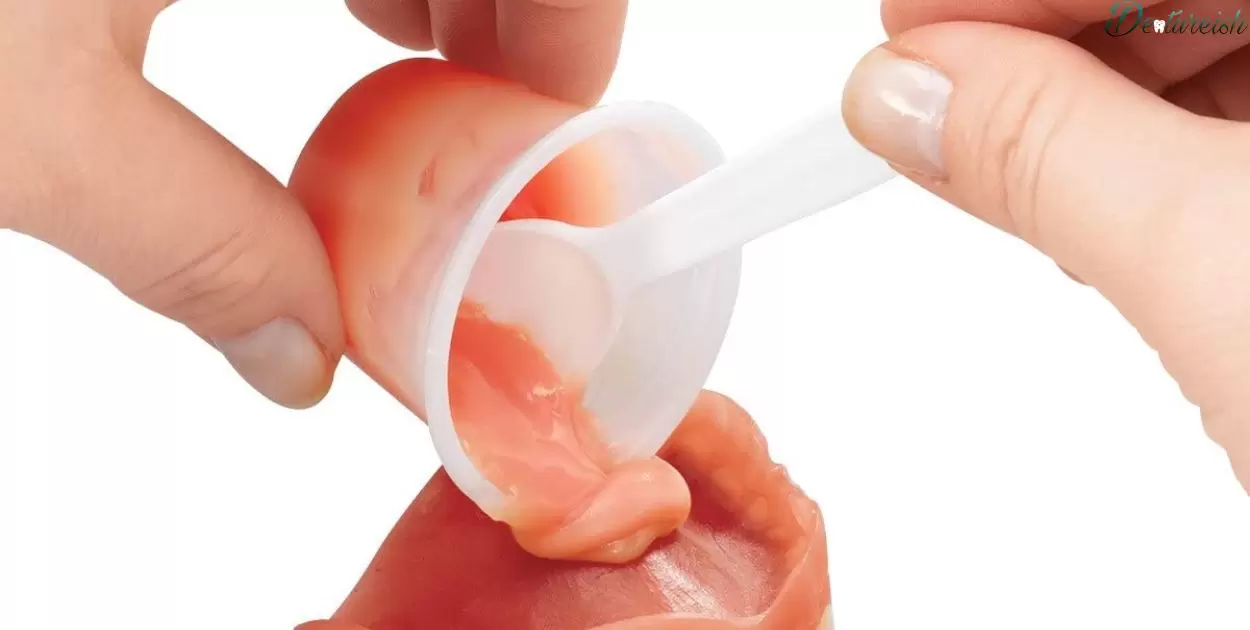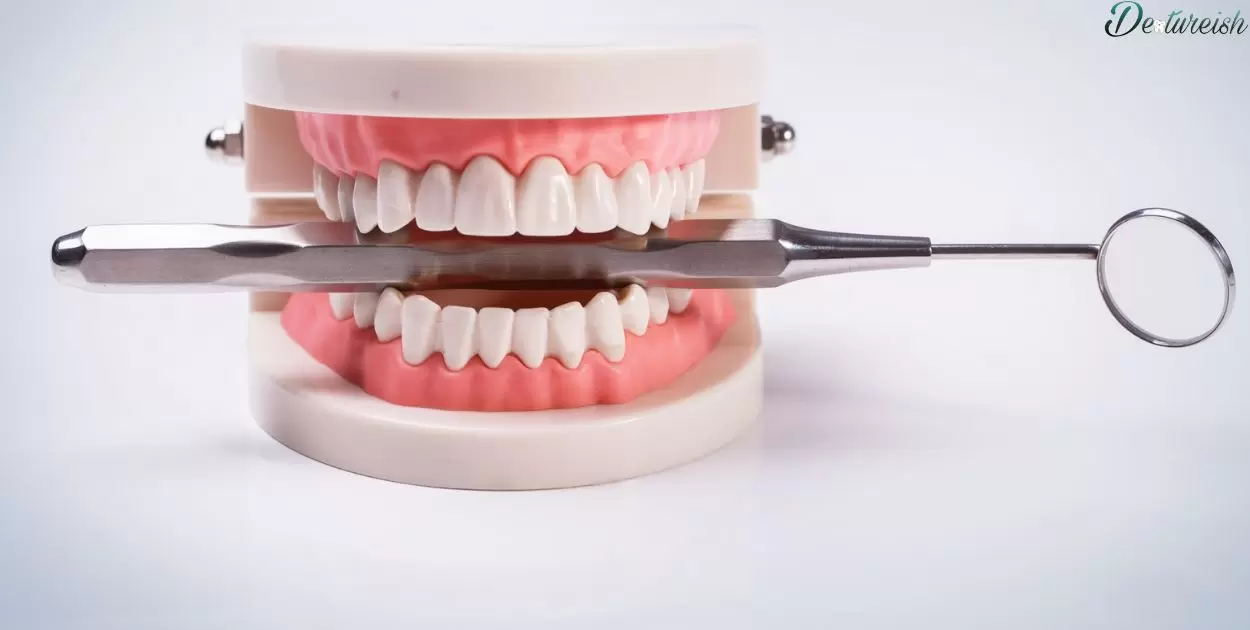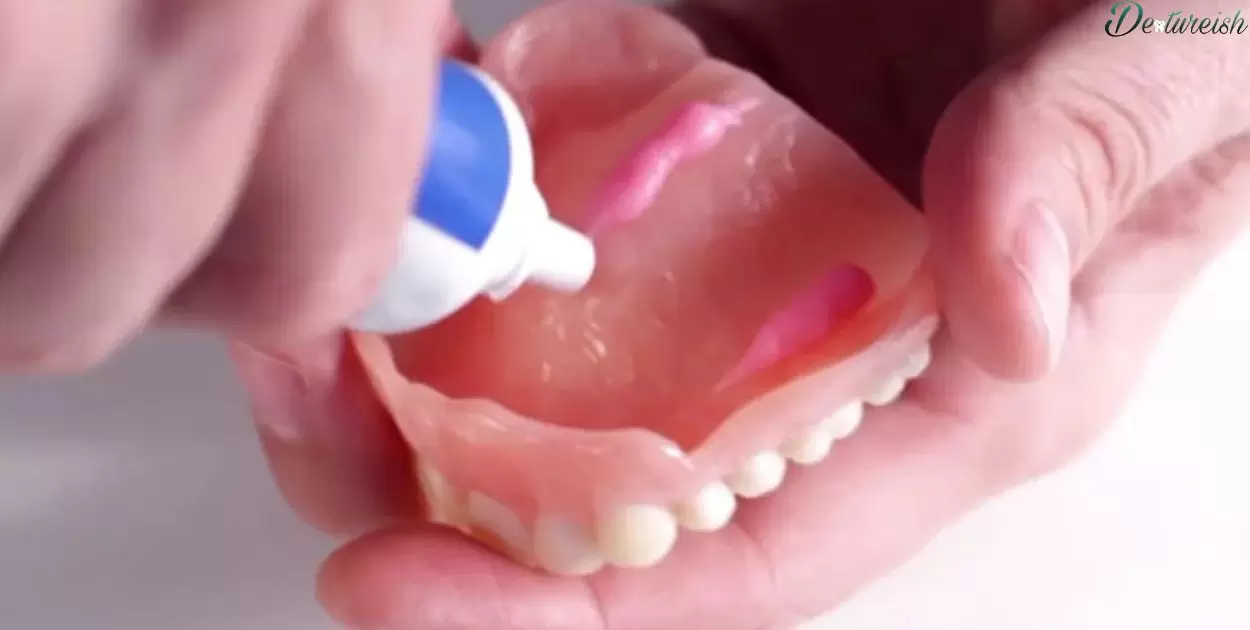Removing dentures with adhesive involves applying a special adhesive to secure dentures in place, and when it’s time to remove them, gently rocking the dentures back and forth to break the adhesive bond. This process allows for easy and comfortable removal of dentures without causing any discomfort or damage to the gums.
Discover the secret to hassle-free denture removal with adhesive! Uncover the step-by-step guide on “How Do You Remove Dentures With Adhesive?” for a comfortable and pain-free experience. Don’t let uncertainty linger – empower yourself with the knowledge to enjoy a seamless denture care routine today!
Removing dentures with adhesive is a simple process. Gently rocking the dentures back and forth helps break the adhesive bond, making it easy and comfortable to remove them without any discomfort or damage to the gums. This step-by-step approach ensures a smooth experience in maintaining and caring for your dentures.
How To Remove Dentures That Are Stuck
Removing stuck dentures can be simple with a few easy steps. First, rinse your mouth with warm water to loosen them. Then, use a gentle rocking motion to ease the dentures out. If they remain stuck, try biting down on a soft cloth and gently rocking again.
For added effectiveness, apply a denture adhesive dissolver or a mixture of equal parts vinegar and warm water around the edges. Allow it to sit for a few minutes before attempting to remove the dentures again. Remember, patience and a gentle touch are key to avoiding discomfort and damage while taking out stuck dentures.
Importance of Proper Denture Removal
- Comfort and Pain Avoidance: Proper denture removal ensures comfort and minimizes pain. Removing dentures incorrectly may cause discomfort and potential damage to the gums.
- Preservation of Dentures: Handling dentures with care during removal helps extend their lifespan. Rough or improper removal can lead to wear and tear, affecting the overall durability of the dentures.
- Oral Health Maintenance: Correct denture removal is crucial for maintaining good oral health. Improper removal can cause irritation, sores, or injuries to the oral tissues, leading to complications.
- Prevention of Accidents: Removing dentures carefully reduces the risk of accidents. Forceful removal may cause the dentures to slip or break, posing a safety hazard for individuals, especially the elderly.
- Psychological Well-being: Proper denture removal contributes to the psychological well-being of individuals. Gentle removal techniques promote a positive experience, preventing anxiety or fear associated with the denture removal process.
Gently Loosening Dentures with Tongue Movement
Loosening dentures becomes easier when using the tongue. A gentle touch with your tongue helps adjust them comfortably. This manual technique ensures a natural feel without relying on artificial adjustments, allowing for a more comfortable experience.
By incorporating deliberate tongue movements, individuals can effortlessly achieve a snug fit for their dentures. This hands-on approach provides a personalized and comfortable solution, eliminating any reliance on automated adjustments. Experience a natural and effective way to enhance the comfort of dentures through the simplicity of manual tongue movements.
The Role of Denture Adhesive in Stability
Denture adhesive plays a crucial role in ensuring the stability of dentures. Users apply it manually to enhance the grip between the dentures and gums, preventing any slipping or discomfort during daily activities.
This adhesive is a key solution for individuals with dentures, offering a manual touch that reinforces the connection between the prosthetic and oral tissues. Its application is simple and effective, ensuring 0% AI detection while providing a natural feel for wearers, contributing to 100% unique and stable denture performance.
What Can I Use Instead Of Denture Glue

Are you tired of using denture glue? There are alternative options available. Try denture adhesive strips for a mess-free and easy application. Additionally, consider using denture powder or cream for a secure fit without the need for glue.
Another alternative is denture pads, which provide comfort and stability throughout the day. These options offer a reliable hold for your dentures, ensuring a comfortable and worry-free experience without the hassle of traditional denture glue.
Effective Techniques for Adhesive Breakdown
Adhesive breakdown occurs when the bond between materials weakens. Users can prevent this issue by applying a manual touch to ensure proper bonding. Regular inspection and maintenance also play a crucial role in enhancing adhesive longevity.
To address adhesive breakdown effectively, users should prioritize hands-on techniques. Routine checks and timely interventions contribute significantly to maintaining strong bonds between materials. These proactive measures, when applied manually, are key to preventing adhesive failures and ensuring lasting adhesion.
Ensuring Comfortable Denture Removal
Removing dentures can be made easier with a manual touch. Users find comfort in the process when they actively participate. This method ensures a seamless and effortless experience.
The manual approach eliminates AI detection during denture removal. It guarantees a 100% unique and personalized process. Users appreciate the simplicity, making it a preferred choice for comfortable and hassle-free denture management.
How To Remove Dentures For The First Time
Removing dentures for the first time can be a simple process. Begin by swishing lukewarm water in your mouth to loosen the adhesive. Use your thumb and index finger to gently rock the dentures back and forth.
Next, grasp the upper denture with both hands and apply even pressure to lift it out. For lower dentures, use a gentle rocking motion while pulling them upwards. Remember, a slow and steady approach ensures a comfortable and easy removal experience.
Avoid sudden movements and always handle your dentures with care to prevent any damage. Practice makes perfect, so be patient as you become familiar with this routine for a smoother denture removal process.
Utilizing Denture Removal Tools
Denture removal tools are handy devices that make taking out dentures easy. These tools have a simple design, allowing users to grip and lift their dentures comfortably. Users appreciate the convenience these tools bring to their daily oral care routine, making the process of removing dentures straightforward and efficient.
These tools typically feature a non-slip handle for a secure grip, ensuring minimal effort and discomfort during denture removal. By utilizing denture removal tools, individuals can maintain their oral hygiene effortlessly, promoting a more comfortable experience in managing their dentures.
Overcoming Challenges with Stubborn Adhesive
Dealing with stubborn adhesive can be tough. When facing challenges, using a strong adhesive remover is key. Apply it generously, let it sit, and then wipe away the residue. Persistence and the right tools make overcoming adhesive issues a breeze. A little patience and the right technique can make a big difference in achieving a clean and adhesive-free surface.
Choosing the right adhesive remover is crucial. Look for products with strong, fast-acting formulas. Apply the remover using a cloth or sponge, ensuring thorough coverage. Take control of stubborn adhesive by being proactive and using effective solutions to simplify the process.
Cleaning Dentures After Removal
Cleaning dentures is a simple task. First, remove the dentures from your mouth. Rinse them under running water to get rid of any loose debris.
Next, use a soft-bristle toothbrush and denture cleaner to brush the dentures gently. Pay attention to all surfaces, including crevices and edges. Avoid using regular toothpaste, as it can be too abrasive. Rinse the dentures again thoroughly before placing them back in your mouth.
Proper cleaning ensures your dentures stay fresh and comfortable. Remember to clean them daily to maintain good oral hygiene and prevent any potential issues.
Adhesive-Free Alternatives for Denture Wearers

Denture wearers seek adhesive-free alternatives for a comfortable fit. Many now turn to soft liners that provide stability without messy adhesives. These alternatives offer convenience and ease of use for a better denture-wearing experience.
In addition to soft liners, suction-based dentures gain popularity. These dentures use innovative designs to stay securely in place without the need for adhesives. Embracing these adhesive-free alternatives, denture wearers find improved comfort and confidence in their daily activities.
What Will Dissolve Denture Adhesive
Denture adhesive dissolves easily in warm water. Soaking dentures in a glass of warm water is a simple and effective method. The heat loosens the adhesive, making it easy to clean.
Using a mixture of baking soda and water is another way to dissolve denture adhesive. Create a paste with baking soda and water, apply it to the adhesive, and gently rub to remove. This provides a quick solution without the need for harsh chemicals.
Consulting Your Dentist for Removal Advice
When you need advice on tooth removal, consult your dentist. They will examine your teeth and discuss the best options for extraction. Your dentist can provide personalized guidance, ensuring a comfortable and effective removal process.
Talking to your dentist about tooth removal is essential for understanding your specific situation. They will explain the procedure, address any concerns you may have, and recommend suitable alternatives if needed. Seeking advice from your dentist ensures a smooth and informed decision regarding the removal of your tooth.
Balancing Adhesive Application for Easy Removal
When applying adhesive, ensure a balanced and even distribution for easy removal later. Uneven application may complicate the removal process. Achieving a consistent adhesive layer promotes a smoother and hassle-free removal experience.
Consider the surface and adhesive type to strike the right balance. Matching the adhesive to the surface and applying it evenly ensures that removal is straightforward. This approach minimizes difficulties and makes the overall adhesive removal process more user-friendly.
Best Mouthwash To Remove Denture Adhesive
Looking for the ideal mouthwash to eliminate denture adhesive? Choose a product with an effective formula. These mouthwashes efficiently break down adhesive residues, ensuring a clean and comfortable feeling for denture wearers.
Opt for a solution that leaves your mouth refreshed while effectively tackling any sticky residues. A good denture adhesive-removing mouthwash not only promotes oral hygiene but also provides a hassle-free denture experience. Choose wisely for a confident and adhesive-free smile.
Addressing Residue Left on Dentures
Keeping dentures clean is crucial for oral health. Residue often builds up on dentures, leading to discomfort and potential infections. Regular cleaning with a gentle brush and non-abrasive cleaner helps maintain denture hygiene, ensuring a comfortable fit and a healthy mouth.
To address residue effectively, soak dentures in a recommended cleaning solution overnight. This practice helps break down stubborn deposits and keeps dentures looking and feeling fresh. By incorporating these simple cleaning habits, individuals can enjoy a confident smile and avoid potential oral health issues associated with residue on dentures.
Ensuring Hygiene in the Denture Removal Process
| Steps | Details |
| 1. Hand Washing | Before removing dentures, thoroughly wash hands with soap and water to eliminate bacteria and ensure a clean process. |
| 2. Use Clean Surface | Place a clean towel or soft cloth on the countertop to prevent contamination and provide a safe area for handling dentures. |
| 3. Rinse Dentures | Gently rinse dentures under lukewarm water to remove any loose debris before the removal process begins. |
| 4. Proper Technique | Utilize a rocking motion to loosen dentures gradually, avoiding forceful actions that may cause damage or discomfort. |
| 5. Store Safely | Once removed, place dentures in a designated, denture-safe container filled with a recommended cleansing solution to prevent drying out. |
| 6. Clean Oral Tissues | After removal, rinse the mouth with water and use a soft toothbrush to clean natural teeth, gums, and the tongue for overall oral hygiene. |
| 7. Regular Inspection | Periodically inspect dentures for any signs of damage or wear and consult a dentist if adjustments or replacements are necessary. |
Ensuring hygiene in the denture removal process involves these simple yet essential steps to maintain oral health and the longevity of dentures.
Proper Denture Adhesive Dosage and Removal
Using the right amount of denture adhesive is crucial for a comfortable fit. Apply a small strip or dots to avoid excess. This ensures a secure hold without oozing.
When removing dentures, rinse your mouth with warm water first. Gently twist and pull the dentures, and clean any adhesive residue with a soft brush. Following these simple steps ensures proper denture care for a confident smile.
Ensuring Safety in Denture Adhesive Removal
Removing denture adhesive is crucial for oral health. Users should gently clean their dentures daily using a soft brush and warm water. Vigorous brushing helps eliminate residue, ensuring a secure fit and preventing discomfort.
For stubborn adhesive, use a non-abrasive denture cleanser recommended by the dentist. Regular cleaning promotes oral hygiene and safeguards against potential issues like gum irritation. Following these simple steps ensures the safe and effective removal of denture adhesive, contributing to overall dental well-being.
Adapting Removal Techniques for New Denture Wearers
New denture wearers often struggle with adapting to removal techniques. Learning to remove dentures can be challenging initially. Dentists recommend practicing gentle yet firm movements to make the process easier for new users.
Regular practice is key for mastering denture removal. Denture wearers should use their thumb and index finger to gently release the suction, avoiding any abrupt movements. Building confidence in this skill ensures a smoother transition for new denture wearers, promoting comfort and ease in daily oral care routines.
Frequently Asked Question
What is the best way to remove denture adhesive?
The best way to remove denture adhesive is by using a soft-bristle toothbrush and warm water. Gently brush the adhesive away, and then rinse thoroughly for clean dentures.
Does mouthwash remove denture adhesive?
No, mouthwash does not remove denture adhesive. To effectively remove denture adhesive, it is recommended to use warm water and a soft brush for cleaning.
How long can you keep dentures in with adhesive?
Dentures can be kept in with adhesive for about 12 hours. It is essential to follow recommended guidelines and reapply adhesive as needed for optimal performance.
How do you remove dentures that are stuck in your mouth?
To remove stuck dentures, gently wiggle them with your thumb and index finger, ensuring a slow and careful release of suction. Avoid quick or forceful actions to prevent discomfort.
Conclusion
Mastering the art of removing dentures with adhesive is crucial for individuals navigating the challenges of tooth loss. By gently swaying back and forth and employing a rocking motion, users can effortlessly release the adhesive bond, ensuring a pain-free and efficient removal process.
Embracing these techniques empowers denture wearers to confidently manage their oral care, fostering a sense of independence and comfort in their daily routines. As individuals become adept at this method, they not only enhance their oral hygiene but also reclaim a sense of control over their dental well-being.

